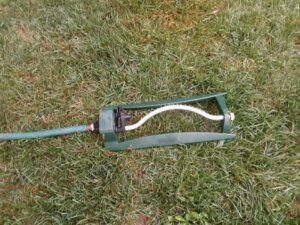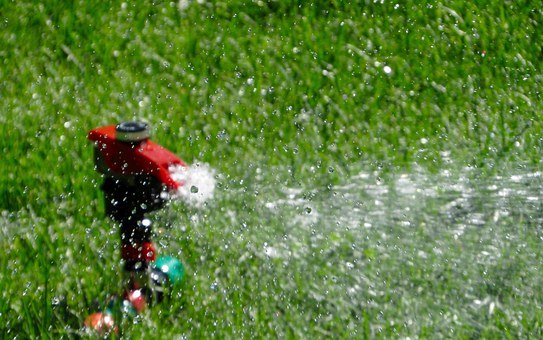As summer kicks into high gear, most Collegeville, Pottstown and Schwenksville homeowners know that watering is the key to a healthy and vibrant summer yard. But many homeowners question the best methods for watering. Because there are so many questions out there, we wanted to share some helpful watering tips because we want you to get the best results for your lawn.
How to Water an Existing Lawn
Established lawns require around 1.5 inches of consistent water per week to maintain green color and active growth. A measuring device or a simple tuna can capture how much it’s getting. And don’t forget how rainfall factors into your watering efforts. A deep, slow soaking is much better than frequent, light watering. Thoroughly soak your lawn down to the roots.
For best results, use a high quality oscillating sprinkler. This could mean somewhere between 45 – 60 minutes per area.
Look for two signs that your lawn is lacking water. First, watch for footprints remaining on the lawn after walking across it instead of bouncing back. Second, you’ll see color changes such as going from green to dull green, yellow, or even brown.

An oscillating sprinkler is an excellent way to water.
Be Consistent
Lawns that go almost completely dormant in hot weather survive and is a choice some homeowners make. But if you commit to watering throughout the summer, then stay consistent with watering. Don’t let the grass turn completely brown, then water the heck out of it, then allow the grass go dormant again. Interrupting the lawns dormancy actually drains large amounts of food reserve from the plant.
How Often Should I Water My Lawn
A healthy lawn does not need to be watered daily. If nature isn’t supplying deep and soaking rains, then shoot for one or two times per week. Infrequent, but a thorough watering is best.
When is the Best Time of Day to Water My Lawn?
EARLY IN THE MORNING It’s still cool enough that the water won’t evaporate too quickly, but as the day heats up, the water won’t stay soaking into your lawn for hours on end. Evening watering presents challenges because without the sun to help dry it up, excess water may sit on your your lawn which could lead to turf diseases.
Other Factors that Can Affect Watering
Lawn mowing also plays a factor into your watering needs. Cutting your lawn short puts a tremendous amount of stress on a lawn and more watering is required to keep it healthy. Longer grass will improve moisture retention in the soil and make your grass more tolerant of heat and drought. Raise your cutting height on your mower and try not to remove more than one-third of the total blade surface at a given mowing. Attempt to cut the grass no shorter than approximately 3 inches. On heavy clay soils and slopes, watch for excessive runoff. You lawn might not be absorbing all the water.
Additional Articles Regarding Lawn Care
Lawn Care 101: How to Get A Great Lawn
Aeration and Overseeding for a Healthy Lawn
At Whitehouse Landscaping, we want you to be happy with your lawn. With over 20 years experience, we’re experts at creating healthy, green grass. If you would like to know more about our lawn care options, contact us for a free consultation. And feel free to call us at 484-300-4290 if you have any questions about watering your lawn or any other concerns about your lawn.

